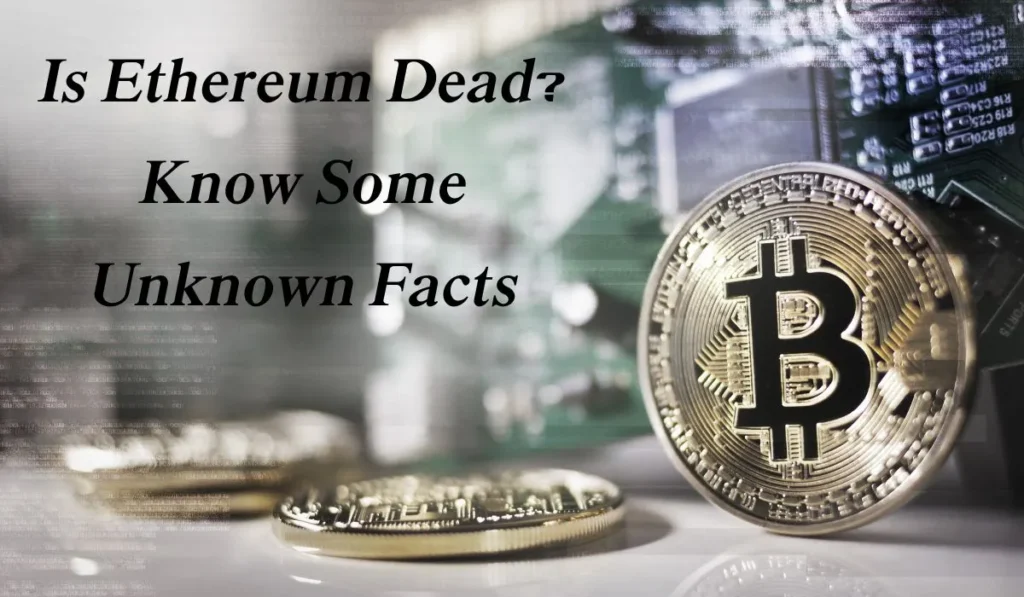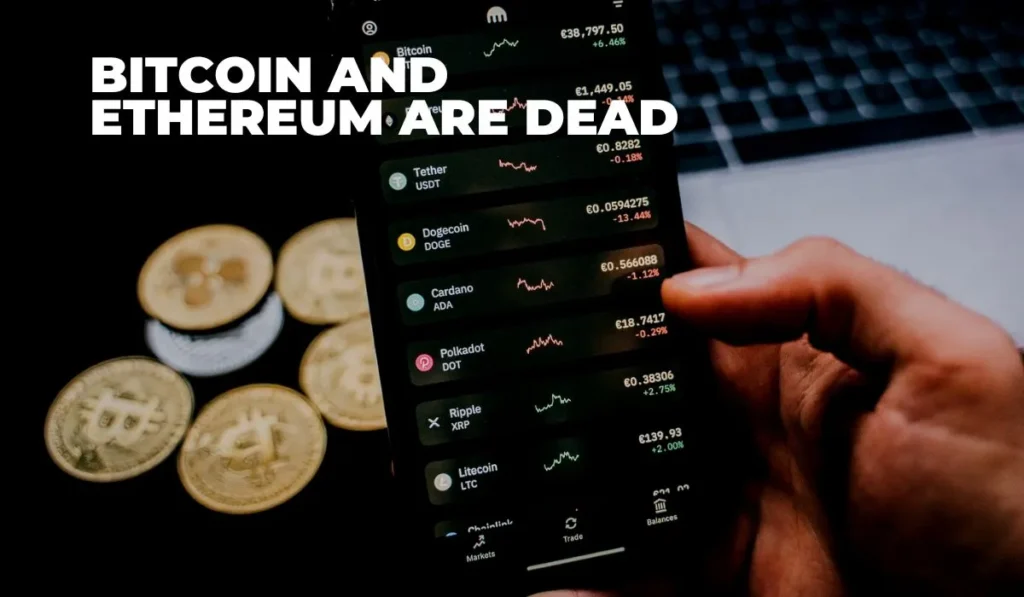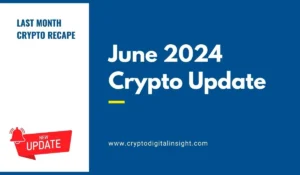Is Ethereum Dead? No, Ethereum is not dead. It remains one of the most important and widely used cryptocurrencies today. As the backbone of non-fungible tokens (NFTs) and decentralized finance (DeFi), Ethereum is still expanding and evolving. Some people might confuse it with Ethereum Classic, a separate network that split from Ethereum in 2016. While Ethereum Classic is less popular and has faced challenges, it is also not dead.
Ethereum keeps evolving with upgrades like Ethereum 2.0, which improves speed and security. These advancements help Ethereum stay ahead in the competitive blockchain space. Let’s explore some unknown facts about Ethereum that show its resilience and growth in 2024.
For those looking to trade digital currencies, it’s crucial to choose the right platform. Check out our guide on the best cryptocurrency exchange in the UK to find the most reliable options available.
Bitcoin and Ethereum are dead?
It is wrong to say that Ethereum and Bitcoin are dead. Both cryptocurrencies are still thriving and in use today. Ethereum and Bitcoin continue to be major participants in the field of digital currencies. Being the first cryptocurrency, Bitcoin is still in high demand. Ethereum, on the other hand, is popular for its smart contract features, which allow developers to build decentralized applications (DApps).
While the market for cryptocurrencies can be unpredictable, this doesn’t mean they are dead. Many investors and tech enthusiasts still see potential in these digital assets. New developments and updates are regularly being made to improve their functionality and security.

In 2024 The Current State of the Ethereum
Ethereum is still a major player in the cryptocurrency space in 2024. It continues to be the top platform for smart contracts, allowing developers to build decentralized applications (DApps) with ease. The Ethereum 2.0 upgrade has brought improvements like faster transactions and lower energy use. This makes Ethereum more efficient and eco-friendly.
Ethereum continues to be trusted by many companies and initiatives because to its dependability and robust community. Ethereum continues to develop despite market fluctuations. New upgrades are always being worked on by developers to improve its capabilities.
Ethereum’s continued significance is obvious by its place in the expanding fields of non-fungible tokens (NFTs) and decentralized finance (DeFi). As technology advances, Ethereum continues to adapt, maintaining its position as a leading player in the blockchain industry. Overall, Ethereum remains a key part of the cryptocurrency landscape in 2024.
Ethereum faces several challenges in 2024:
- Scalability: Ethereum struggles with slow transaction speeds when many users are active.
- High Fees: During rush hours, gas prices continue to be high, adding to the cost of transactions.
- Security Concerns: While secure, Ethereum is still vulnerable to hacks and smart contract bugs.
- Energy Usage: Although improved, Ethereum’s energy consumption is still a concern.
- Competition: Other blockchains, like Solana and Cardano, are rising as alternatives.
To maintain your privacy while trading, consider using an anonymous cryptocurrency exchange that ensures secure and private transactions without compromising your personal information.
The split between Ethereum and Ethereum Classic: Is Ethereum Classic dead?
The split between Ethereum and Ethereum Classic happened in 2016 after a major hack on the DAO, a decentralized application built on Ethereum. To recover the stolen funds, the Ethereum community decided to create a hard fork, which resulted in two separate blockchains: Ethereum (ETH) and Ethereum Classic (ETC).
Here are the key points:
Ethereum (ETH): The new chain, Ethereum, continued to grow and is now the leading platform for smart contracts and decentralized applications (DApps). It embraced the Ethereum 2.0 update, which enhanced energy efficiency and scalability.
Ethereum Classic (ETC): The original chain, Ethereum Classic, upheld the immutability principle—code is law—and declined to undo the hack. However, it has faced many challenges since the split.
Now, is Ethereum Classic dead?
- Security Issues: Ethereum Classic has suffered from several 51% attacks, where malicious actors gained control of the network. Its security has come under scrutiny because of this.
- Lower Adoption: While Ethereum thrives, Ethereum Classic struggles to attract developers and users. Most DApps, projects, and DeFi activities are now on the Ethereum network.
- Limited Upgrades: Ethereum Classic lacks the continuous upgrades seen in Ethereum. It still uses the original proof-of-work (PoW) consensus mechanism, which is less energy-efficient.
- Niche Community: Ethereum Classic is not completely dead, despite its difficulties. There is still a committed group that supports the initial idea of an unchangeable blockchain. Some miners and investors continue to support it.

Unknown Facts Challenging The “Dead” Narrative
Fact 1: Always Improving
Ethereum keeps getting better! They’re working on something called Ethereum 2.0, which is a significant upgrade. This upgrade will solve some of Ethereum’s biggest problems, like how many transactions it can handle and the fees it charges. They’re changing how Ethereum works so it uses less energy and can do more transactions. This shows that the team behind Ethereum is still hard at work, constantly improving it. So, it’s not a “dead” project at all!
Fact 2: Lots of People Involved
Many people are helping out with Ethereum, not just the leading team. These people are developers, always coming up with new ideas to make Ethereum even cooler. They’re making all sorts of apps that run on Ethereum, like ones for money and social stuff. This shows that Ethereum is still super popular and valuable because so many people are working on it and using it.
Fact 3: Getting Used in the Real World
Even though Ethereum has some problems, it’s still being used in the real world. Big companies like Microsoft and J.P. Morgan are starting to use Ethereum for their stuff. This means Ethereum isn’t just for people trading online; it’s also used for essential things by big companies. Plus, there’s this thing called Decentralized Finance (DeFi), which is a fancy way of saying people use Ethereum to do banking without banks. So, Ethereum is not dead—it’s alive and growing!
To understand the nuances of Ethereum development, it’s essential to dive into the Ethereum testnet. This environment provides a safe and controlled space to experiment and develop, ensuring your projects are robust before going live.
Addressing Potential Concerns of Ethereum
While good things were discussed earlier, we should know that Ethereum still has problems. Things like being able to handle lots of transactions and expensive fees are still big worries for people who use it and those who build stuff on it. But, the folks in the Ethereum community are trying hard to fix these issues. They’re working on things like making it easier to handle more transactions and updating the central system to make it better.

Ethereum’s Development and Future Prospects
Ethereum is a popular blockchain platform known for smart contracts. Its growth has been rapid since its launch in 2015. Developers are continually improving Ethereum’s quality. They are working on Ethereum 2.0, which will be faster and use less energy. This upgrade will help Ethereum handle more transactions.
Ethereum may become a major player in digital finance in the future. More businesses are starting to use Ethereum for their projects. Also, people can create their own tokens on Ethereum, making it even more popular.
However, Ethereum faces challenges too. Competing blockchains are emerging, and they could impact its growth. But with continuous development and strong community support, Ethereum has bright prospects. Seeing where it goes next is exciting!
For those interested in exploring the latest trends in digital currencies, check out our detailed coverage on MrBeast’s Cryptocurrency.
Final Words
We checked out some hidden facts about Ethereum, and it’s still a work in progress with many developers on board. It’s getting used in more and more places despite having some issues. People are busy trying to solve those problems, and there’s a strong community backing it up. So, it’s not failing at all. Predicting the future of any cryptocurrency project is tough, but Ethereum is on the rise and could make a big difference.
Frequently Asked Questions
Is Ethereum dead or still a good investment?
Ethereum is not dead. It is still a major force in the cryptocurrency space. Many investors still see Ethereum as a good investment due to its strong network and continuous upgrades, like Ethereum 2.0. It powers many decentralized apps and has a thriving community.
What happened to Ethereum Classic? Is it dead?
Ethereum Classic is not dead, but it is less popular than Ethereum. It split from Ethereum after a major hack in 2016. While it still has a loyal following, Ethereum Classic struggles with fewer updates and less community support compared to Ethereum.
What are dead wallets and how do they affect Ethereum?
Ethereum Dead wallets are wallets that no longer have access to their private keys, making the Ethereum inside unreachable. These wallets can reduce the total supply of Ethereum in circulation, potentially increasing its value over time. However, they also mean lost opportunities for trading and development.
What is a dead Ethereum address?
A dead Ethereum address is a wallet that no longer has activity. It might be because the owner lost access, or they no longer use it. Funds in a dead address Ethereum are essentially trapped and cannot be moved without the private key.
What is an Ethereum dead cat bounce?
An Ethereum dead cat bounce refers to a temporary recovery in the price of Ethereum during a downtrend. This dead cat bounce ethereum might look like a reversal, but it’s often followed by further decline. Traders should be cautious during such movements.








3 Responses
Wow! This blog looks exactly like my old one! It’s on a completely different topic but it has pretty much the same page layout and design.
Wonderful choice of colors!
Hey would you mind sharing which blog platform you’re working with?
I’m planning to start my own blog soon but I’m having
a tough time choosing between BlogEngine/Wordpress/B2evolution and Drupal.
The reason I ask is because your layout seems different then most
blogs and I’m looking for something unique. P.S Apologies for getting off-topic but I had to ask!
WordPress